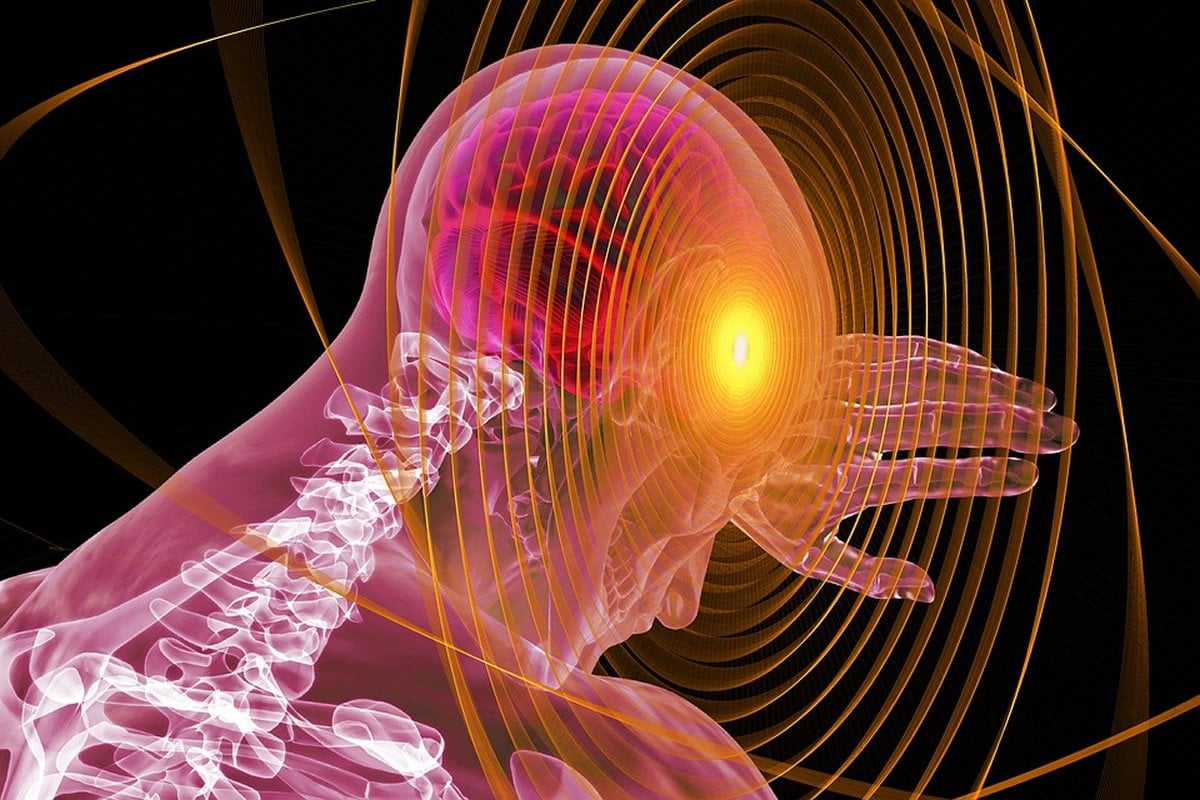Summary: Rodent study reveals noise-induced hearing loss is associated with elevated expression of proinflammatory cytokines and microglia activation in the primary auditory cortex. Pharmacologically depleting microglia helps prevent tinnitus in mice with noise-induced hearing loss.
Source: PLOS
Inflammation in a sound-processing region of the brain mediates ringing in the ears in mice that have noise-induced hearing loss, according to a study publishing June 18 in the open-access journal PLOS Biology by Shaowen Bao of the University of Arizona, and colleagues.
Hearing loss is a widespread condition that affects approximately 500 million individuals, and is a major risk factor for tinnitus — the perception of noise or ringing in the ears. Recent studies indicate that hearing loss causes inflammation — the immune system’s response to injury and infection — in the auditory pathway. But its contribution to hearing loss-related conditions such as tinnitus is still poorly understood. To address this gap in knowledge, Bao and his colleagues examined neuroinflammation — inflammation that affects the nervous system — in the auditory cortex of the brain following noise-induced hearing loss, and its role in tinnitus, in rodent models.

The results indicate that noise-induced hearing loss is associated with elevated levels of molecules called proinflammatory cytokines and the activation of non-neuronal cells called microglia — two defining features of neuroinflammatory responses–in the primary auditory cortex. Experiments in mice that incur noise-induced hearing loss showed that a cell-signaling molecule called tumor necrosis factor alpha (TNF-α) mediates neuroinflammation, tinnitus, and synaptic imbalance — an altered pattern of signaling between neurons. Moreover, the researchers found that pharmacological blockade of TNF-α or depletion of microglia prevented tinnitus in mice with noise-induced hearing loss. According to the authors, the findings suggest that neuroinflammation may be a therapeutic target for treating tinnitus and other hearing loss-related disorders.
Funding: This work was partially supported by National Institute of Health (DC009259 for SB, DC014335 for JZ), Department of Defense (W81XWH-15-1-0028 and W81XWH-15-1-0356 for SB, W81XWH-15-1-0357 for JZ) and the Food and Health Bureau of Hong Kong Special Administrative Region Government (04150076 for SY). The funders had no role in study design, data collection and analysis, decision to publish, or preparation of the manuscript.
Source:
PLOS
Media Contacts:
Shaowen Bao – PLOS
Image Source:
The image is in the public domain.
Original Research: Open access
“Neuroinflammation mediates noise-induced synaptic imbalance and tinnitus in rodent models”. Weihua Wang, Li. S. Zhang, Alexander K. Zinsmaier, Genevieve Patterson, Emily Jean Leptich, Savannah L. Shoemaker, Tatiana A. Yatskievych, Robert Gibboni, Edward Pace, Hao Luo, Jinsheng Zhang, Sungchil Yang, Shaowen Bao.
PLOS Biology. doi:10.1371/journal.pbio.3000307
Abstract
Neuroinflammation mediates noise-induced synaptic imbalance and tinnitus in rodent models
Hearing loss is a major risk factor for tinnitus, hyperacusis, and central auditory processing disorder. Although recent studies indicate that hearing loss causes neuroinflammation in the auditory pathway, the mechanisms underlying hearing loss–related pathologies are still poorly understood. We examined neuroinflammation in the auditory cortex following noise-induced hearing loss (NIHL) and its role in tinnitus in rodent models. Our results indicate that NIHL is associated with elevated expression of proinflammatory cytokines and microglial activation—two defining features of neuroinflammatory responses—in the primary auditory cortex (AI). Genetic knockout of tumor necrosis factor alpha (TNF-α) or pharmacologically blocking TNF-α expression prevented neuroinflammation and ameliorated the behavioral phenotype associated with tinnitus in mice with NIHL. Conversely, infusion of TNF-α into AI resulted in behavioral signs of tinnitus in both wild-type and TNF-α knockout mice with normal hearing. Pharmacological depletion of microglia also prevented tinnitus in mice with NIHL. At the synaptic level, the frequency of miniature excitatory synaptic currents (mEPSCs) increased and that of miniature inhibitory synaptic currents (mIPSCs) decreased in AI pyramidal neurons in animals with NIHL. This excitatory-to-inhibitory synaptic imbalance was completely prevented by pharmacological blockade of TNF-α expression. These results implicate neuroinflammation as a therapeutic target for treating tinnitus and other hearing loss–related disorders.







